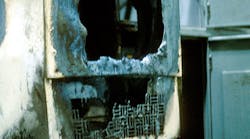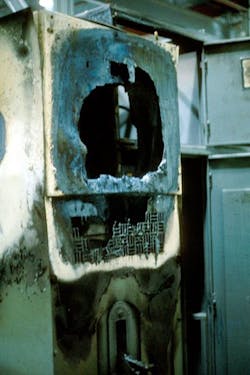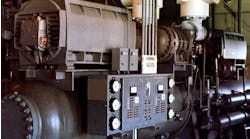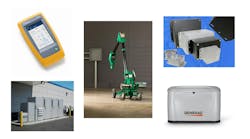Overcoming Junction Box-to-Motor Mounting Deficiencies
When swapping out a replacement motor, it’s tempting to unbolt the J-box (junction box/terminal box/ T-box) from the motor and leave it attached to the conduit. The problem with doing so is that the motor manufacturers have never standardized the bolt-hole spacing for the J-box. If you are installing a “Brand A” motor in place of “Brand B” — even though the frames are exactly the same — this common shortcut puts you at risk of an explosion or fire.
The problem
Electrical service centers frequently receive motors for repair without the J-box, which means the connection box is still “out there” in your plant. When someone’s in a hurry, and the J-box bolt holes don’t match those on the replacement motor, it’s not uncommon to see a J-box attached by a single bolt. Besides the risk of water intrusion into the motor (and subsequent failure), this increases the chance of a ground failure due to unreliable ground fault protection.
Some plants ground the motor frame; others only connect the ground to the J-box. So, if the J-box is solidly grounded but not bonded to the motor, the motor is not really grounded per the National Electrical Code (NEC). The Photo illustrates what can happen when a J-box is not properly grounded to the motor frame (i.e., if both are not properly grounded per the NEC).
The solution
Because technicians are under pressure to change motors quickly — and it’s much easier (and faster) to unbolt the J-box than to disconnect the incoming conduit — why not solve the real problem?
For each occurrence of interchangeable motors, determine which brand has the highest representation and then sketch the J-box bolt pattern for the dominant motor. Have your service center drill and tap new holes in the correct locations on the rest of the motors, so that your now-standardized J-box can be solidly bolted to each one.
Tapped holes that are covered by the J-box can be left as is, or filled with epoxy or silicone. Those that won’t be covered by the J-box can be filled with set screws that are secured in place with a thread-locker product. In some cases, the service center may need to machine the side of the frame flat, to ensure a proper contact between the J-box and frame.
Finally, buy a spare J-box from the manufacturer you select, and send it along for fitting purposes each time you send a motor out for repair.
Yung is a senior technical support specialist at the Electrical Apparatus Service Association (EASA) in St. Louis.




